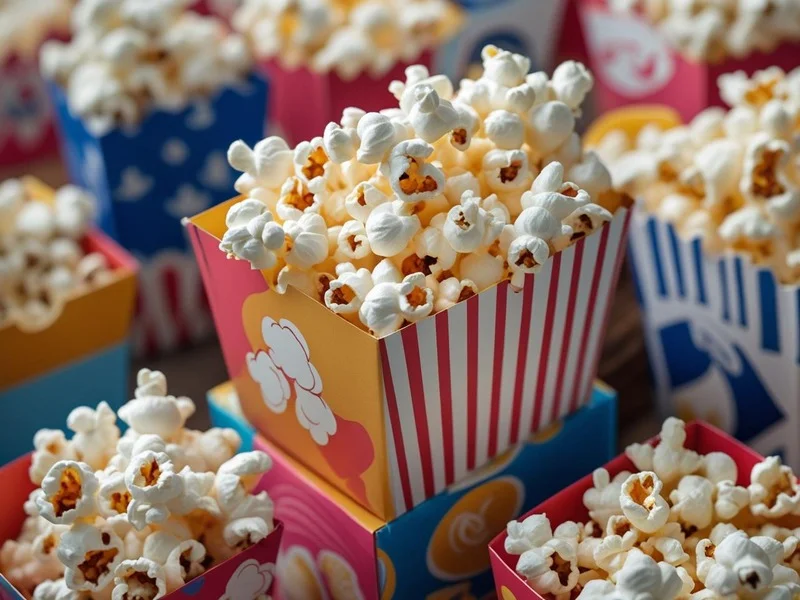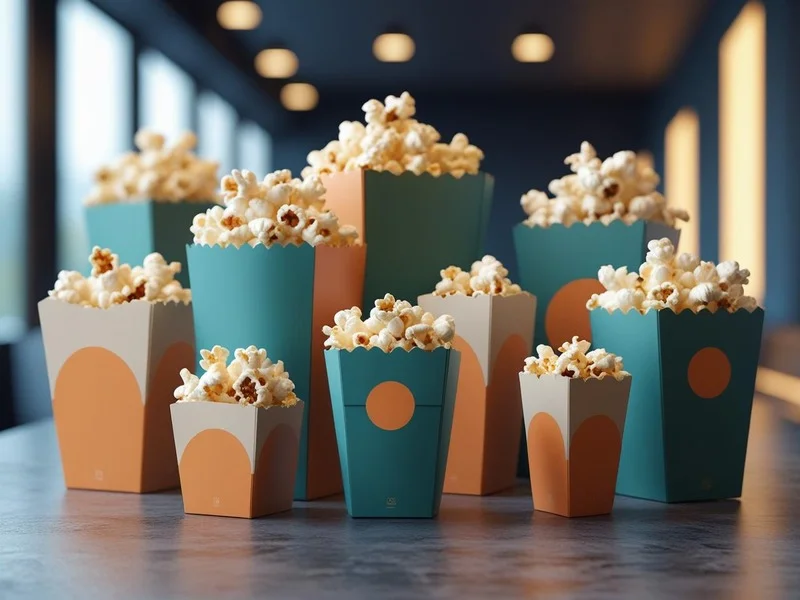Popcorn isn’t just a snack—it’s an experience. Whether at the movies, a carnival, or a cozy night in, the design of the popcorn box plays a pivotal role in shaping that experience. Beyond holding the kernels, packaging influences perceptions, evokes emotions, and drives purchasing decisions. Let’s delve into how the psychology of packaging, especially in popcorn boxes, affects consumer behavior.
1. The Power of First Impressions
First impressions matter. In a sea of snack options, an eye-catching popcorn box can make all the difference. Bright colors, unique shapes, and tactile materials can
- Grab Attention: Vibrant hues like red and yellow are known to stimulate appetite and excitement.
- Convey Quality: Premium finishes and sturdy materials suggest a high-quality product.
- Evoke Emotions: Design elements can trigger feelings of nostalgia, joy, or indulgence.
According to a study, 72% of consumers say packaging design influences their purchasing decisions.

2. Color Psychology: More Than Meets the Eye
Colors do more than beautify; they communicate. In popcorn packaging
Red & Yellow: Stimulate appetite and convey excitement.
- Blue: Associated with trust and reliability.
- Green: Suggests freshness and health.
A study on popcorn packaging revealed that yellow and red packaging are suitable for sweet products, blue for salty, and white for tasteless products.
3. The Decoy Effect: Steering Choices Subtly
Ever noticed how a medium popcorn is priced almost the same as a large? This is the “decoy effect” at play—a pricing strategy where a third, less attractive option influences consumer choice. By introducing a medium size that’s only slightly cheaper than the large, consumers are nudged to perceive the large as a better deal, leading to higher sales.
4. Shape and Texture: The Silent Communicators
The physical feel and shape of packaging can influence perceptions
- Unique Shapes: Stand out and are more memorable.
- Textured Surfaces: Convey quality and enhance tactile experience.
A popcorn box with a distinctive shape or texture can make the product seem more premium.
5. Storytelling Through Design
Packaging can tell a story, creating a connection with consumers:
- Brand Identity: Consistent colors and logos build recognition.
- Narratives: Imagery and text can convey a brand’s history or values.
- Emotional Appeal: Designs that evoke memories or feelings can enhance loyalty.
For instance, a vintage-style popcorn box can evoke nostalgia, making the product more appealing.
6. Sustainability: Meeting Modern Expectations
Eco-friendly packaging is increasingly influencing buying decisions
Recyclable Materials: Appeal to environmentally conscious consumers.
- Minimalist Design: Suggests a brand’s commitment to sustainability.
Using sustainable materials in popcorn box design can attract a broader customer base.

7. Practicality: Function Meets Form
Beyond aesthetics, functionality is crucial. Popcorn boxes should be:
- Sturdy: To hold the product without spillage.
- Heat-Resistant: Ensuring safety, especially for children.
- Easy to Handle: Comfortable grip and portability enhance user experience.
Practical design ensures customer satisfaction and repeat purchases.
- Leveraging Technology: QR Codes and Beyond
Modern packaging integrates technology to enhance engagement:QR Codes: Direct consumers to websites, promotions, or interactive content.
- Augmented Reality (AR): Offers immersive brand experiences.
Incorporating tech elements can differentiate brands and offer added value.
Conclusion
The design of a popcorn box is more than just aesthetics; it’s a powerful tool that influences consumer behavior. By understanding and applying psychological principles in packaging design, brands can enhance appeal, convey quality, and drive sales.
